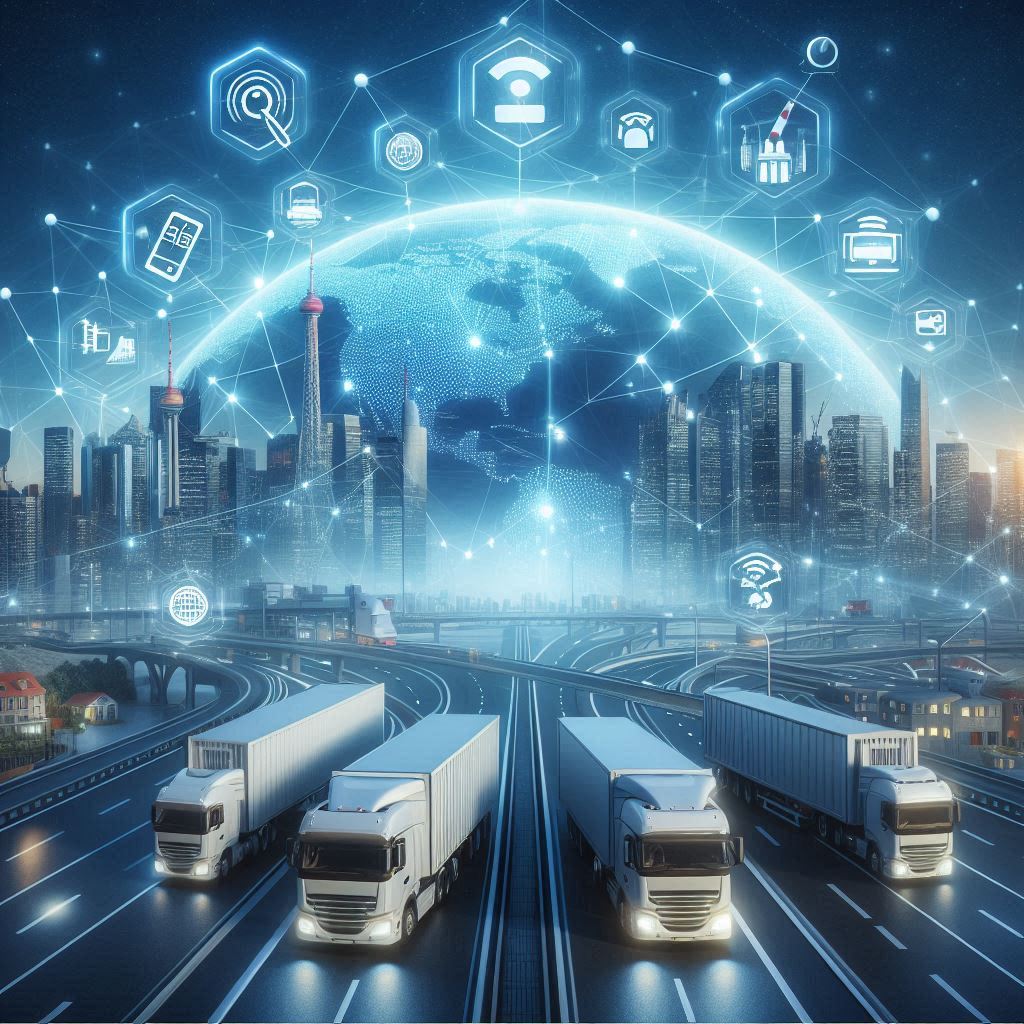How does Fleet Management use IoT Connectivity?
Fleet Management leverages IoT connectivity to transform a collection of vehicles into a smart, interconnected system. By using sensors, telematics devices, and communication networks, fleet managers can collect real-time data from vehicles and drivers. This data is then transmitted to a cloud-based platform for analysis, providing actionable insights that optimise operations, improve safety, and reduce costs.

Global IoT connectivity is a transformative force in modern fleet management, moving beyond simple vehicle tracking to enable a new level of operational efficiency, safety, and scalability. For any company with a geographically diverse or international fleet, the ability to maintain a consistent connection is not just a convenience—it is a critical business imperative. The importance of this global reach can be broken down into several key areas.
First and foremost, global IoT connectivity ensures seamless, uninterrupted data flow. Fleets operating across states, countries, or even continents face a major challenge with traditional cellular networks: roaming. Without a global IoT solution, vehicles would need to switch between different network providers in each region, leading to inconsistent connectivity, costly roaming charges, and data blackouts. A single, global IoT SIM (often an eSIM) solves this by automatically connecting to the strongest available network, regardless of the country. This guarantees a continuous stream of real-time data on vehicle location, speed, and health, which is vital for monitoring and emergency response.
This constant data stream is the foundation for several core functions that drive operational excellence. Predictive maintenance is revolutionised by continuous connectivity. Sensors on vehicles can transmit detailed diagnostics in real time, allowing fleet managers to detect potential mechanical issues before they lead to costly breakdowns and unplanned downtime. This capability is particularly valuable for long-haul trucks far from a home depot, as maintenance can be scheduled proactively at a convenient location, maximising vehicle uptime and extending asset lifespan.
Furthermore, global connectivity is essential for advanced logistics and route optimisation. With a live feed of data on traffic, weather, and road conditions from anywhere in the world, AI-powered fleet management platforms can dynamically adjust routes to avoid delays and save fuel. For a large fleet, this can translate into significant cost savings and faster delivery times, which directly impact customer satisfaction and profitability.
From a management perspective, global IoT connectivity simplifies a complex operational burden. Instead of juggling multiple contracts, invoices, and technical support relationships with a patchwork of regional providers, a single global service provider offers unified billing and a streamlined management platform. This not only reduces administrative overhead but also allows for centralised oversight and control of the entire fleet, regardless of its size or global distribution. The scalability of these solutions is unparalleled, enabling businesses to easily add new vehicles and expand into new markets without the technical and logistical hurdles associated with traditional telematics.

Enhanced safety and compliance are among the most critical benefits. Global connectivity enables continuous driver behaviour monitoring, tracking habits like speeding, harsh braking, and excessive idling. This data can be used to coach drivers, reduce the risk of accidents, and lower insurance costs. For international fleets, it also simplifies compliance with a myriad of local and international regulations, such as hours-of-service mandates, by automatically and securely logging data for reporting. This level of oversight ensures both the well-being of the driver and the legal integrity of the business.
Here’s a breakdown of how IoT connectivity is used in fleet management:
1. Data Collection from Vehicles:
- Telematics and Sensors: Vehicles are equipped with various IoT devices, including GPS trackers, telematics units, and a wide array of sensors. These sensors can monitor critical parameters like engine performance, fuel levels, tire pressure, and temperature inside cargo containers.
- Dashcams: IoT-enabled dashcams provide video telematics, recording incidents and monitoring driver behaviour to improve safety and provide a record in case of accidents.
2. Data Transmission:
- Connectivity Networks: The collected data is transmitted from the vehicles to a central platform. The choice of network depends on factors like geographic range, data volume, and latency requirements. Standard connectivity options include cellular networks (4G/5G), Wi-Fi, and even satellite for remote areas.
- Real-time Communication: This connectivity enables real-time data flow, which is crucial for applications like live vehicle tracking, dispatching, and emergency response.
3. Data Processing and Analysis:
- Cloud Platforms: Data from the fleet is sent to a cloud-based fleet management platform. The cloud provides scalable storage and powerful processing capabilities to handle the massive volume of data generated by a large fleet.
- Analytics and AI: The platform uses analytics and sometimes artificial intelligence (AI) algorithms to process the data. It can identify trends, trigger alerts for critical events (like speeding or a sudden drop in fuel), and generate reports.
Key Applications of IoT Connectivity in Fleet Management:
- Real-time Vehicle Tracking and Monitoring: GPS trackers provide the exact location of each vehicle, allowing fleet managers to monitor routes, optimise dispatching, and give customers accurate estimated times of arrival (ETAs).
- Predictive Maintenance: Sensors continuously monitor vehicle health and performance. By analysing this data, the system can predict maintenance needs and alert managers to potential issues before they cause costly breakdowns and downtime.
- Driver Behaviour Monitoring: IoT devices track driving habits such as speeding, harsh braking, and excessive idling. This information helps in coaching drivers, improving safety, and reducing fuel consumption.
- Route Optimization and Fuel Management: By collecting data on traffic patterns, road conditions, and fuel consumption, the system can suggest the most efficient routes, leading to significant savings on fuel and reduced travel time.
- Cargo and Asset Management: IoT sensors can monitor the condition of cargo, such as temperature for refrigerated shipments, and provide real-time updates on the location and security of valuable assets to prevent theft or loss.
- Compliance and Reporting: IoT devices can automatically log data required for regulatory compliance, such as driver hours of service, reducing the administrative burden and ensuring legal adherence.

